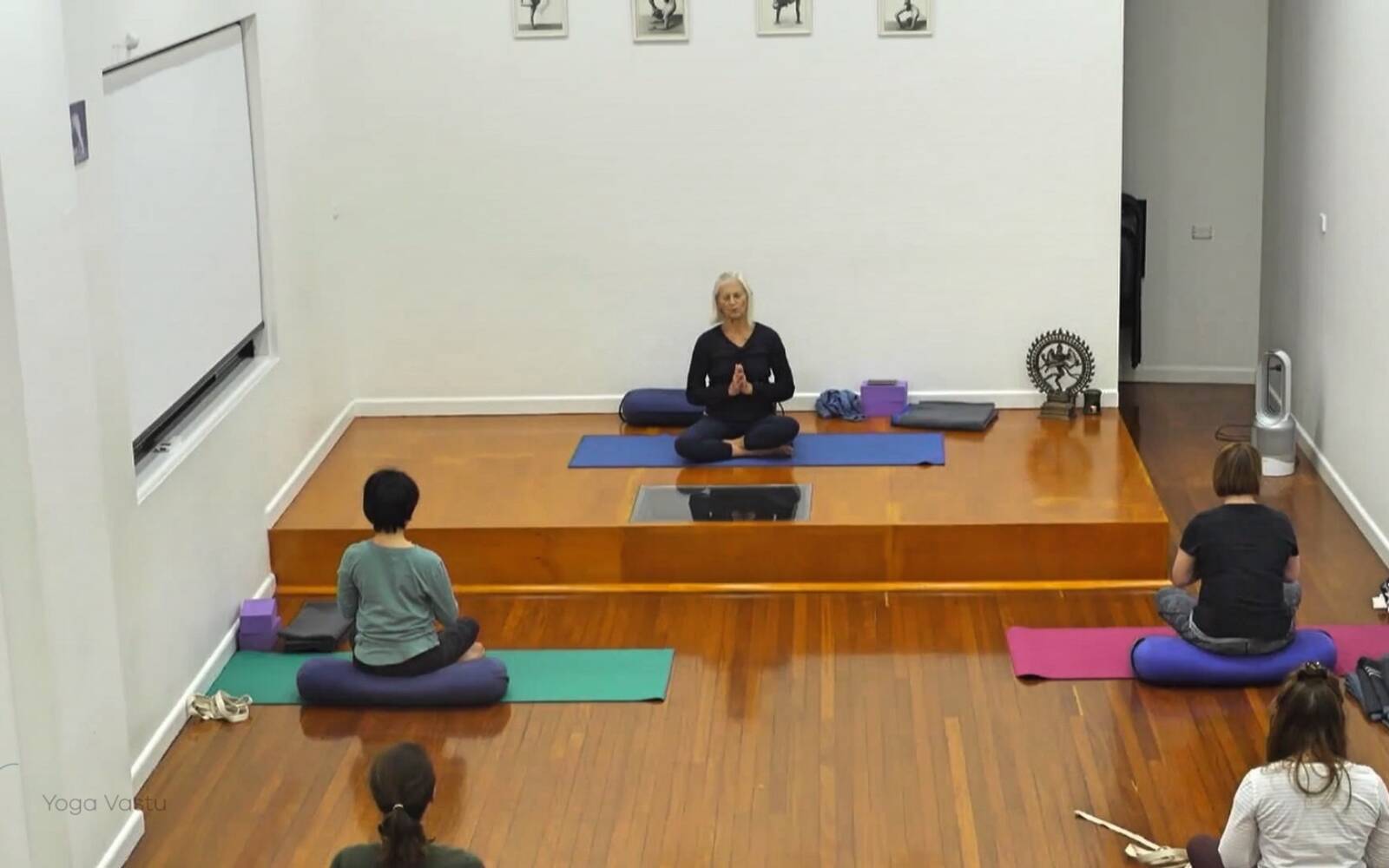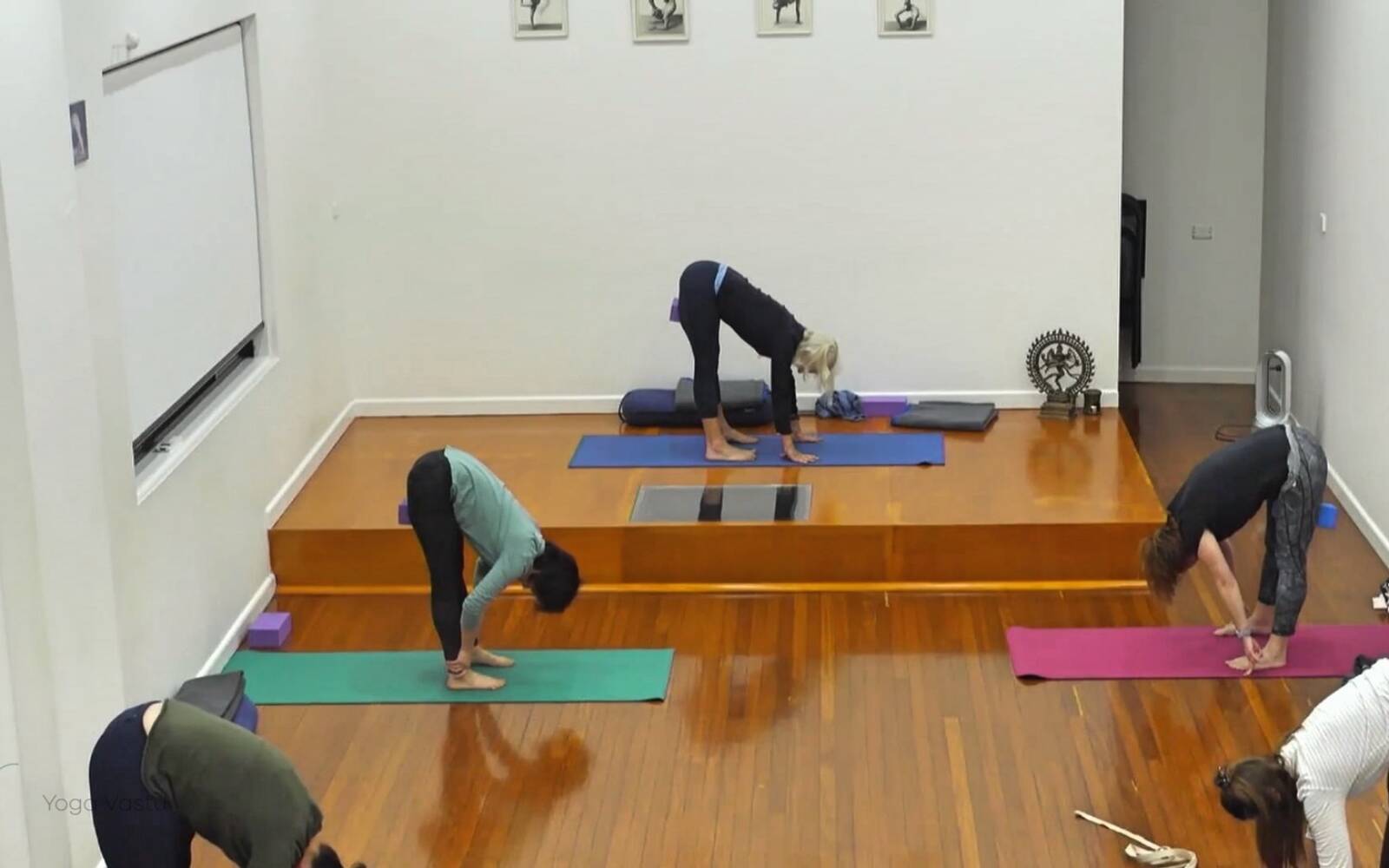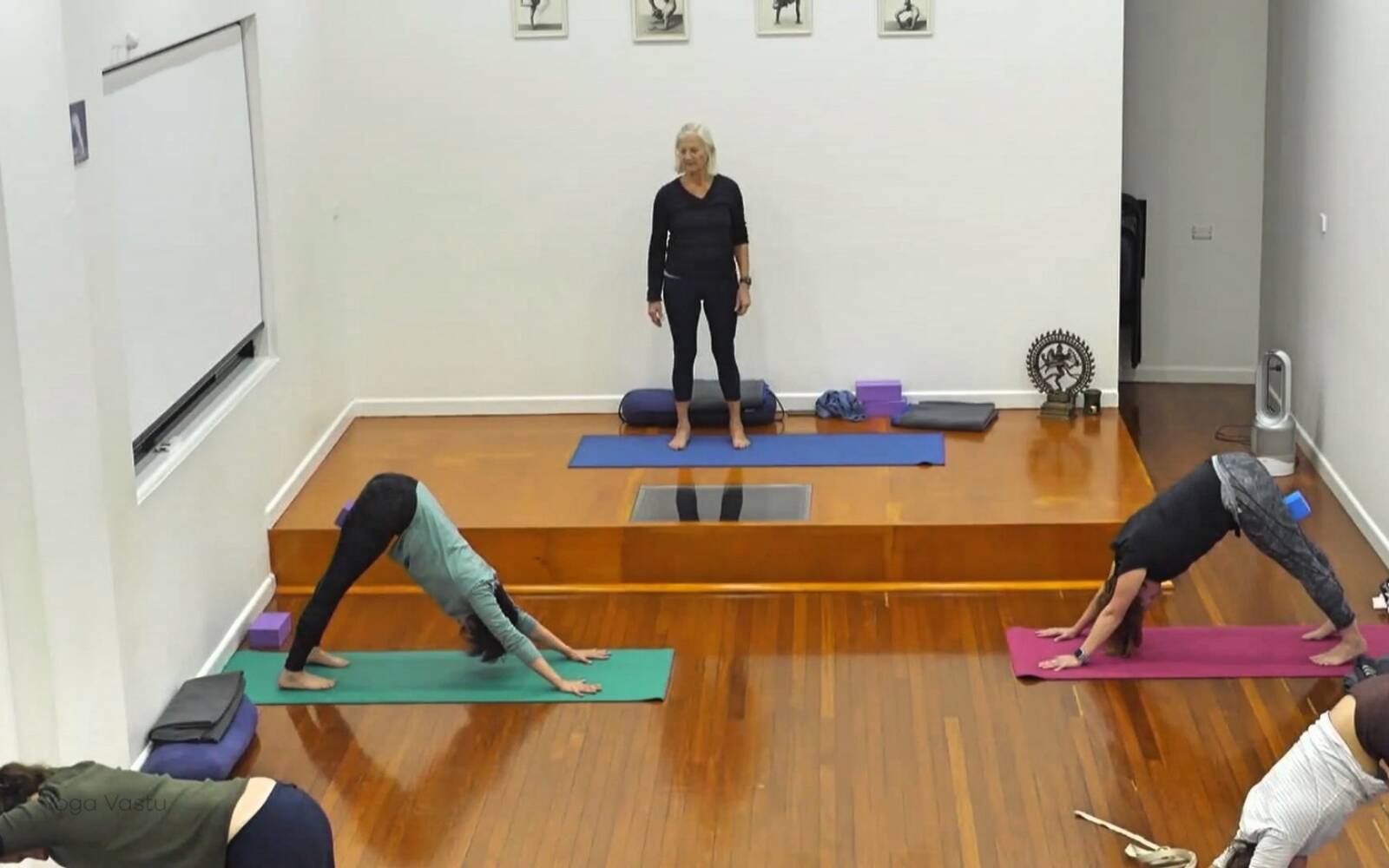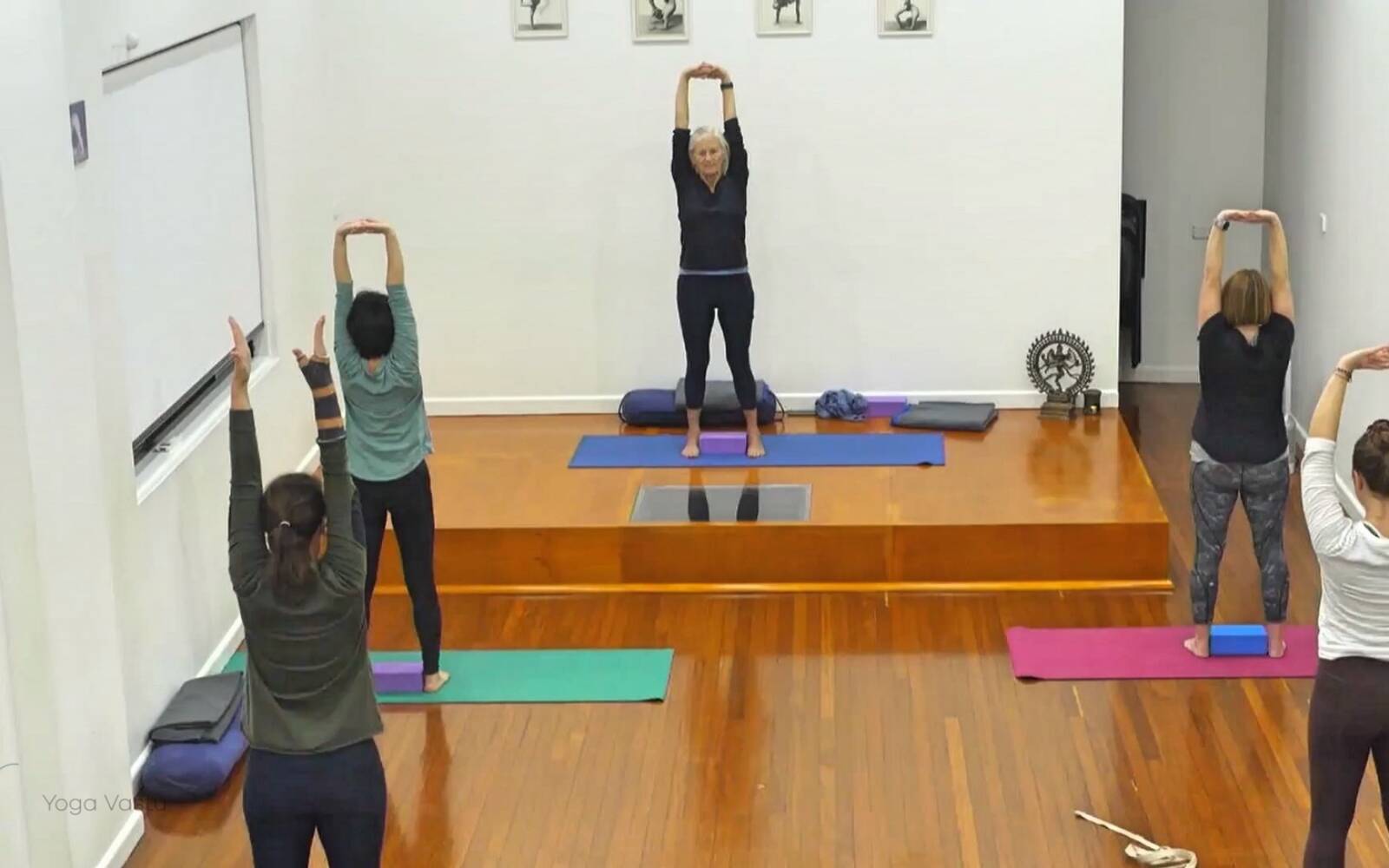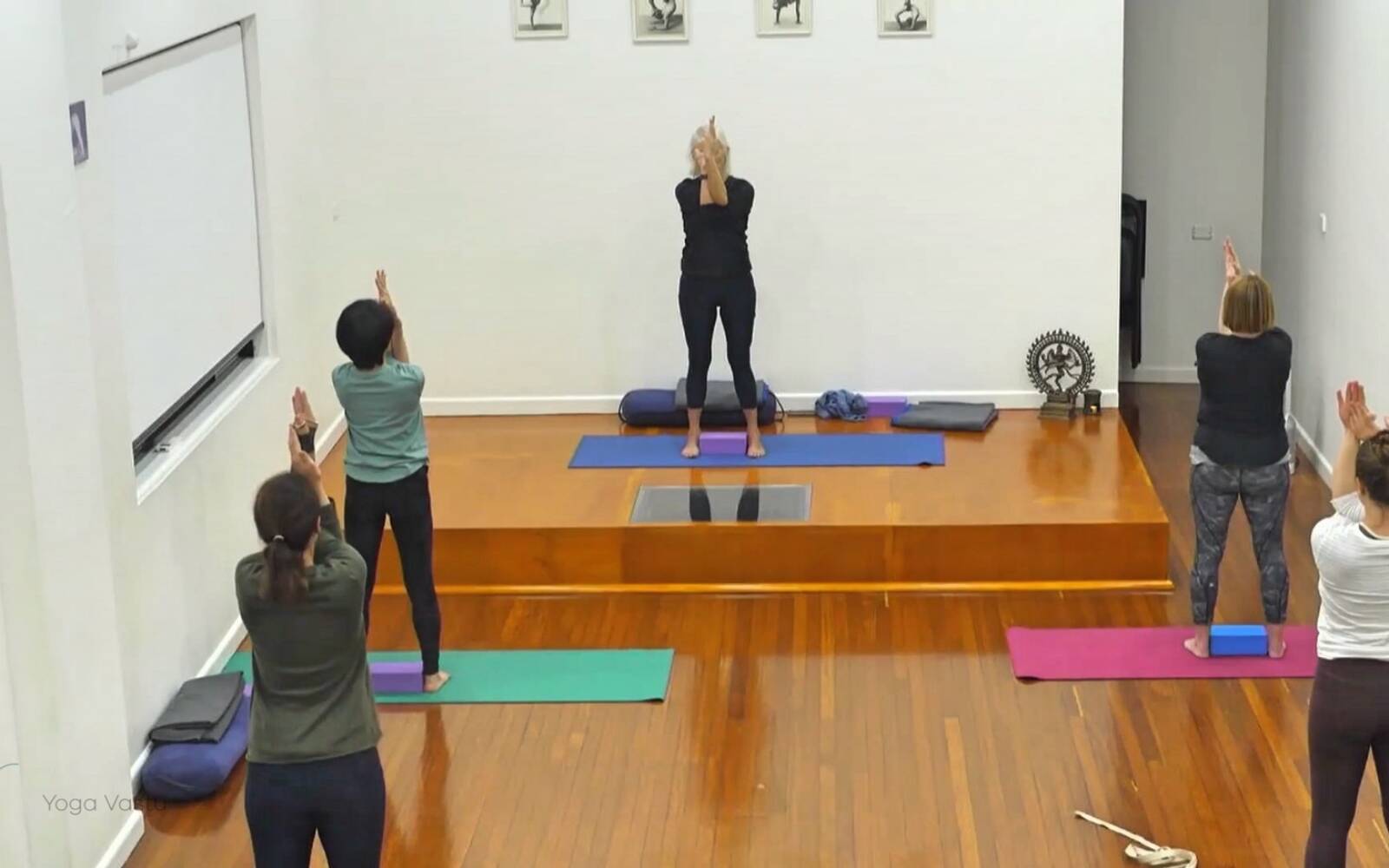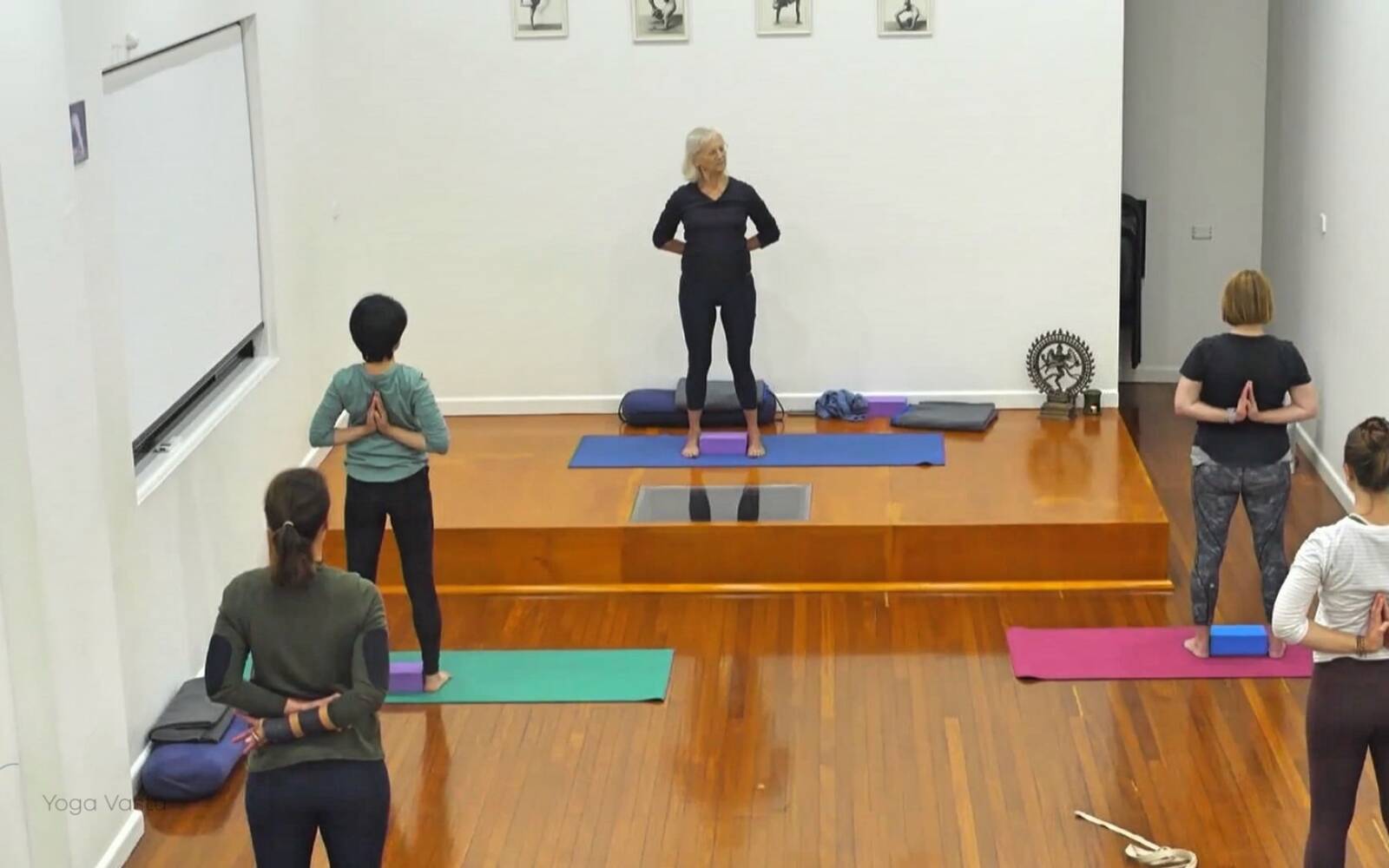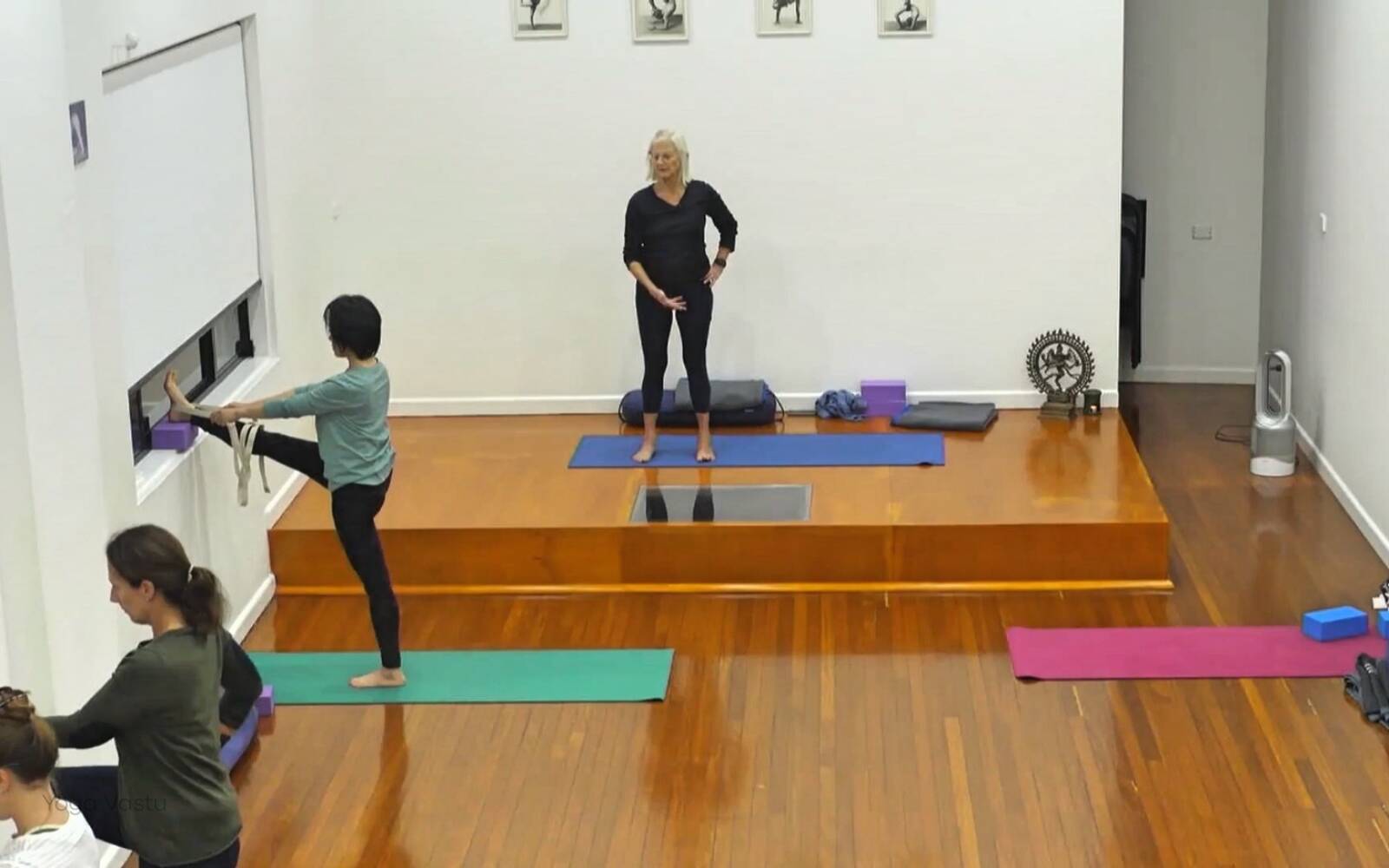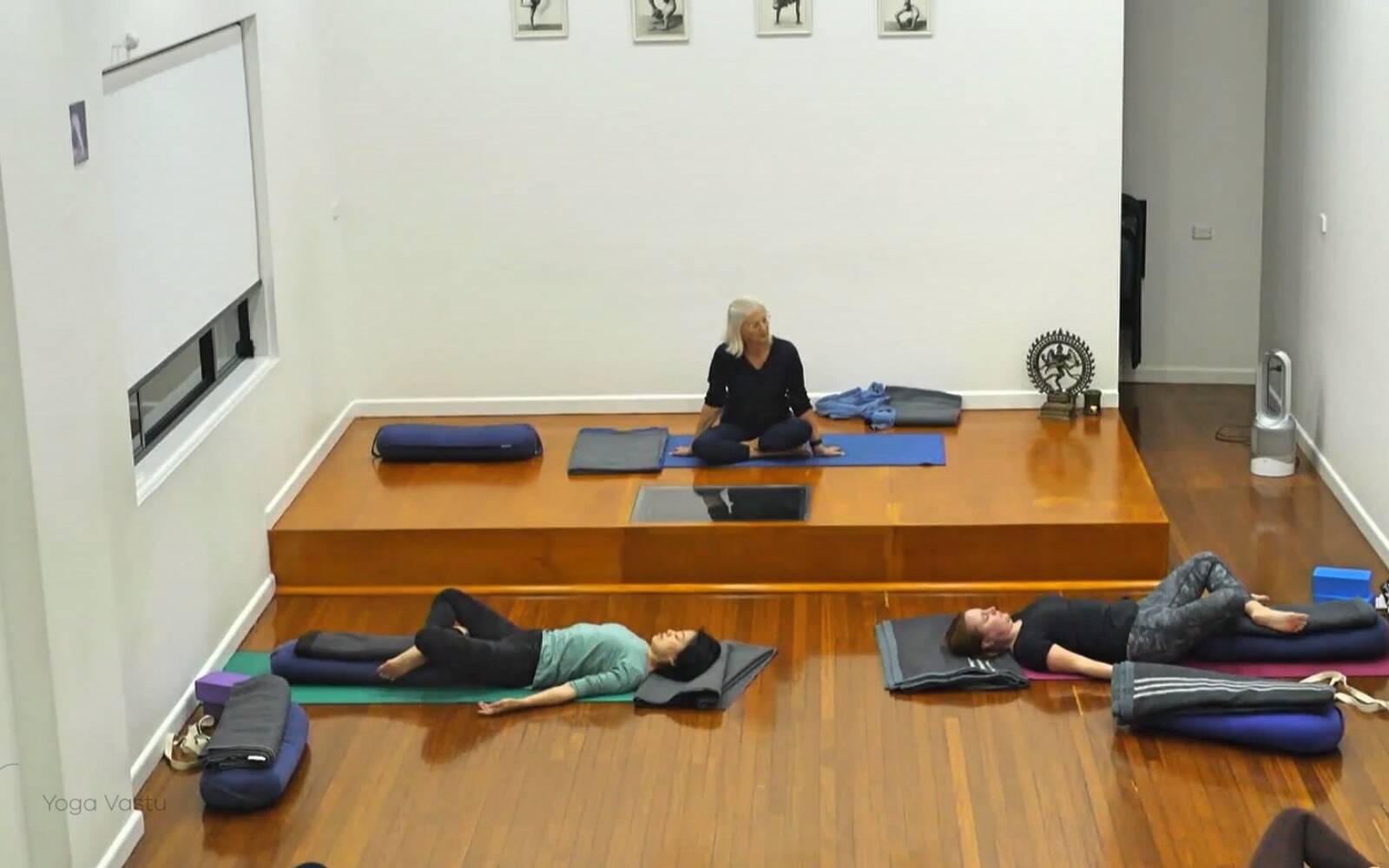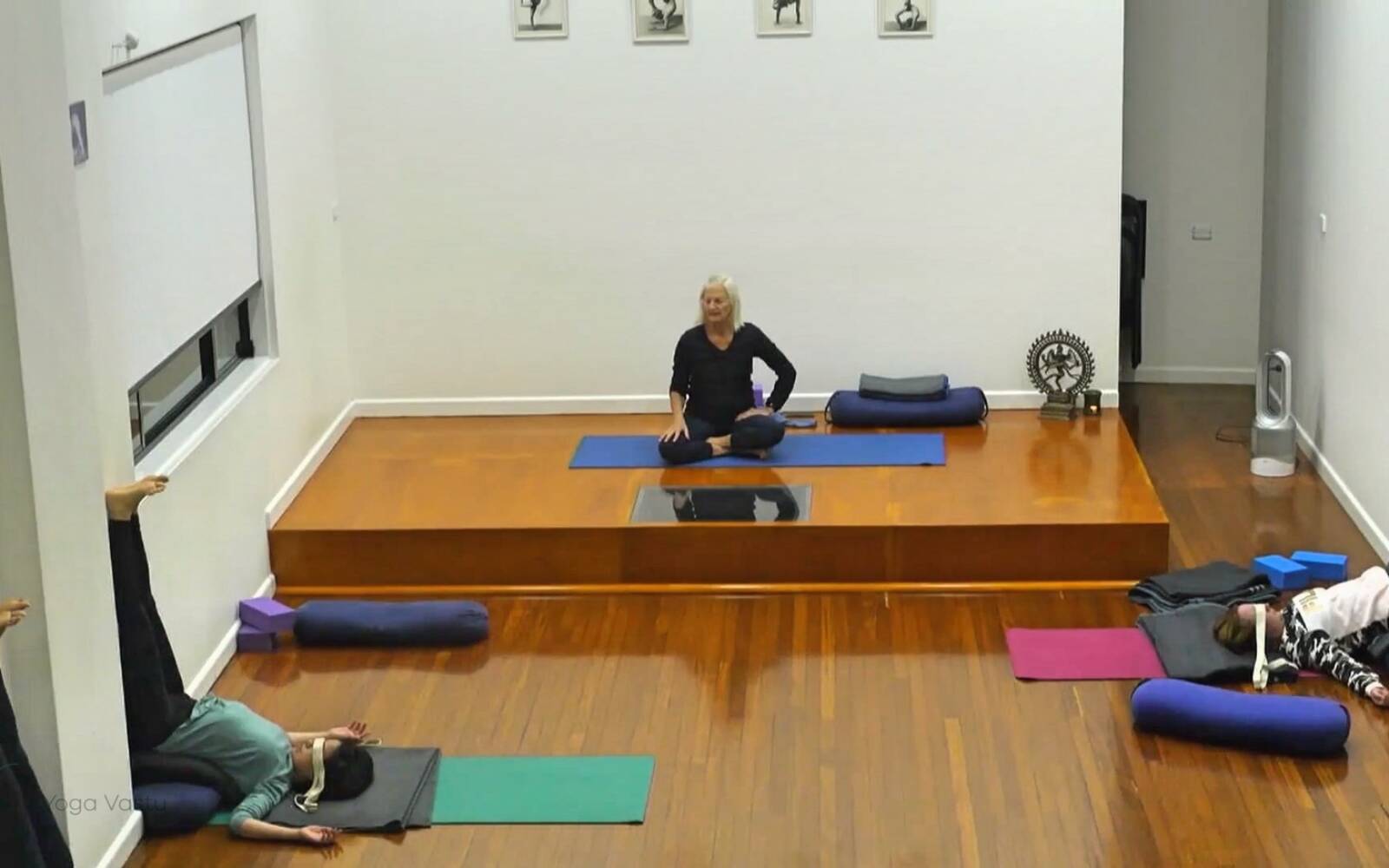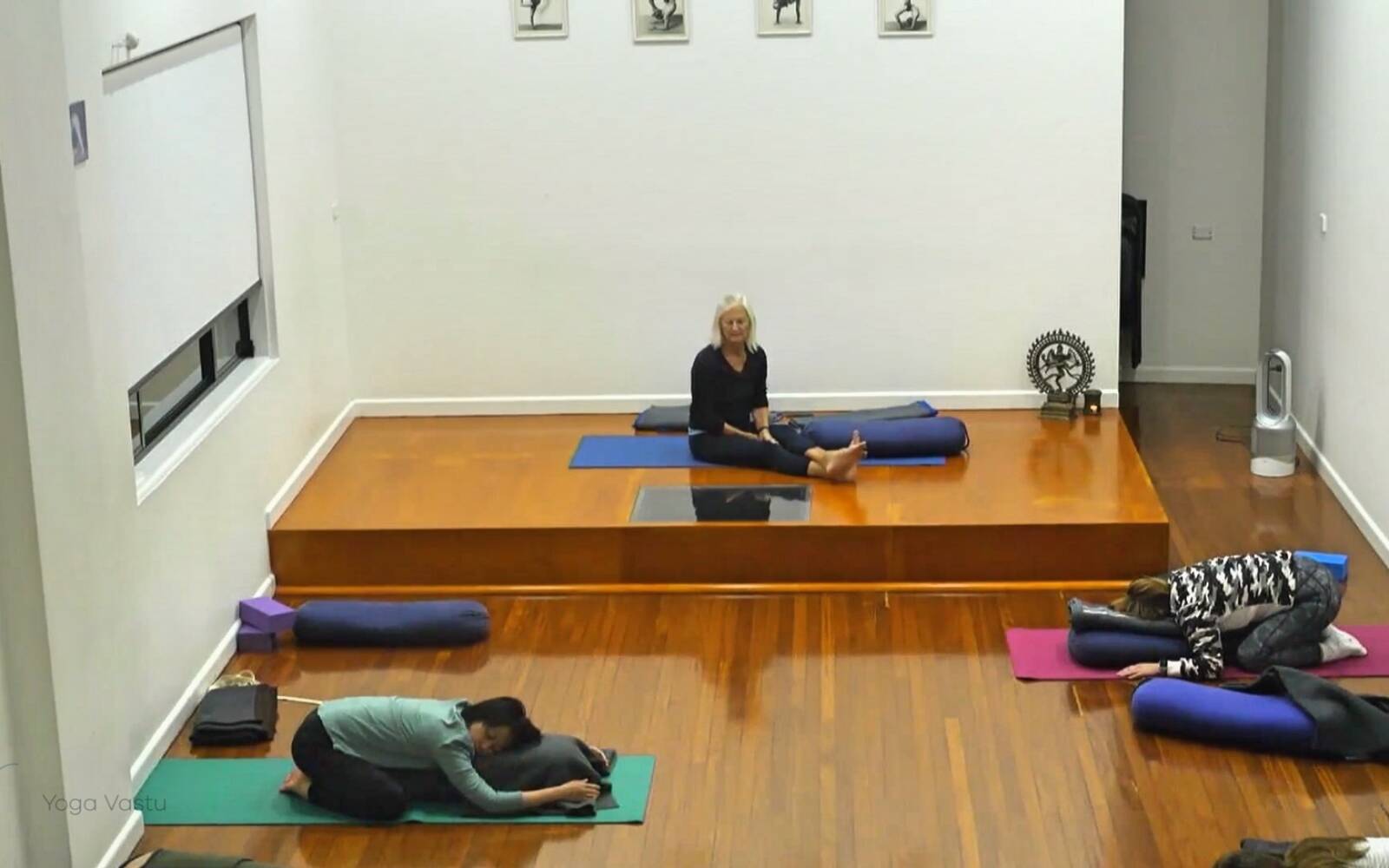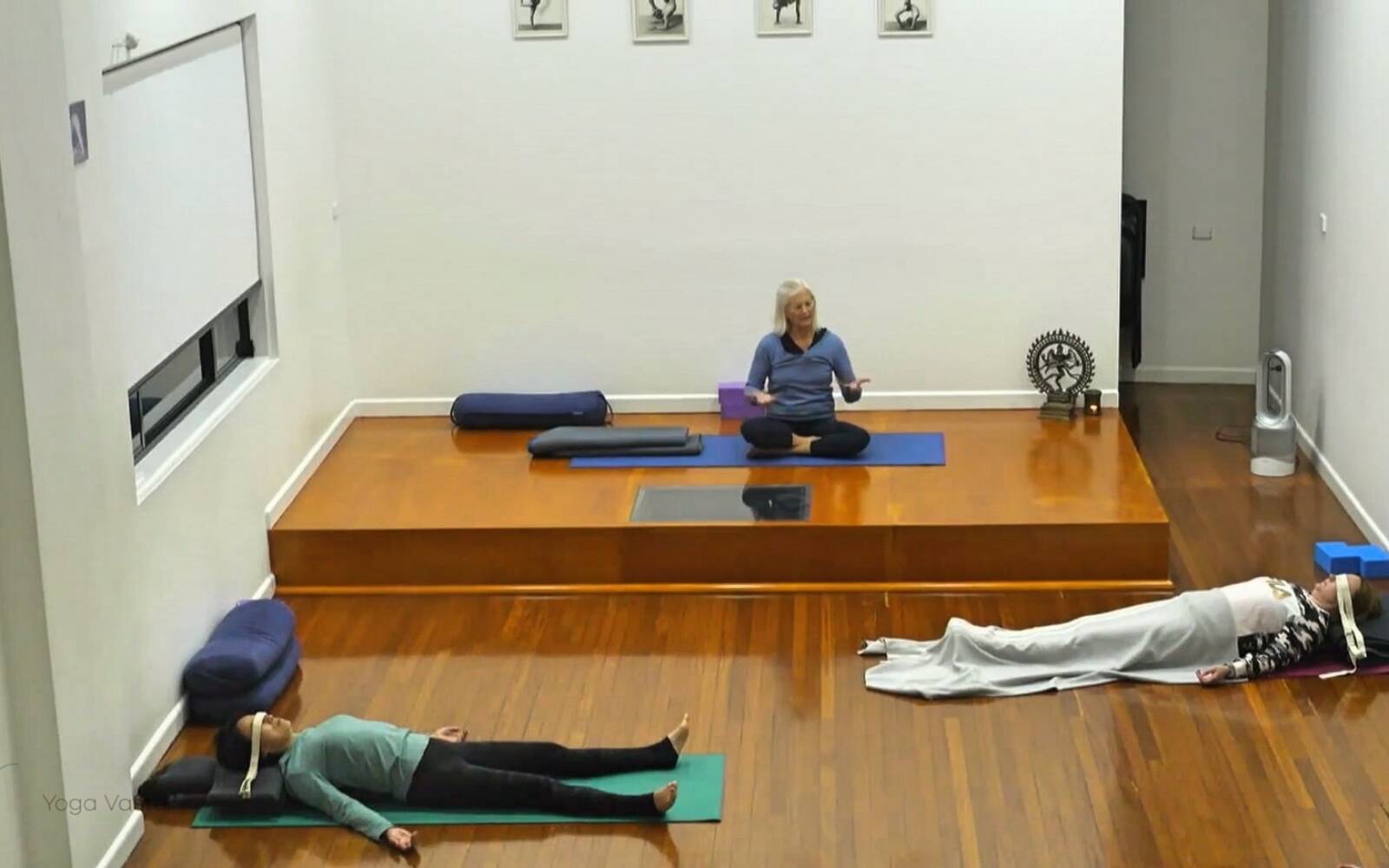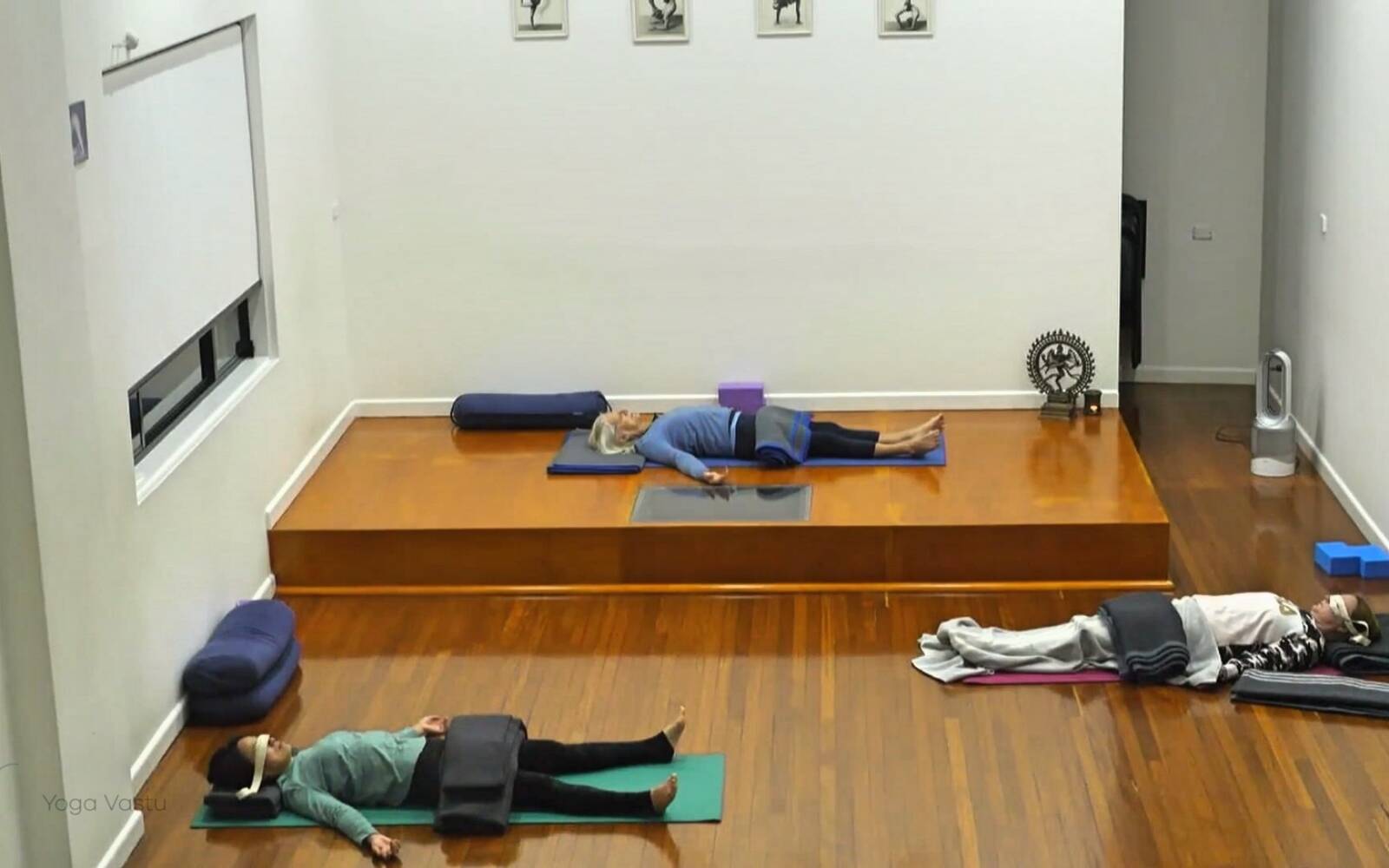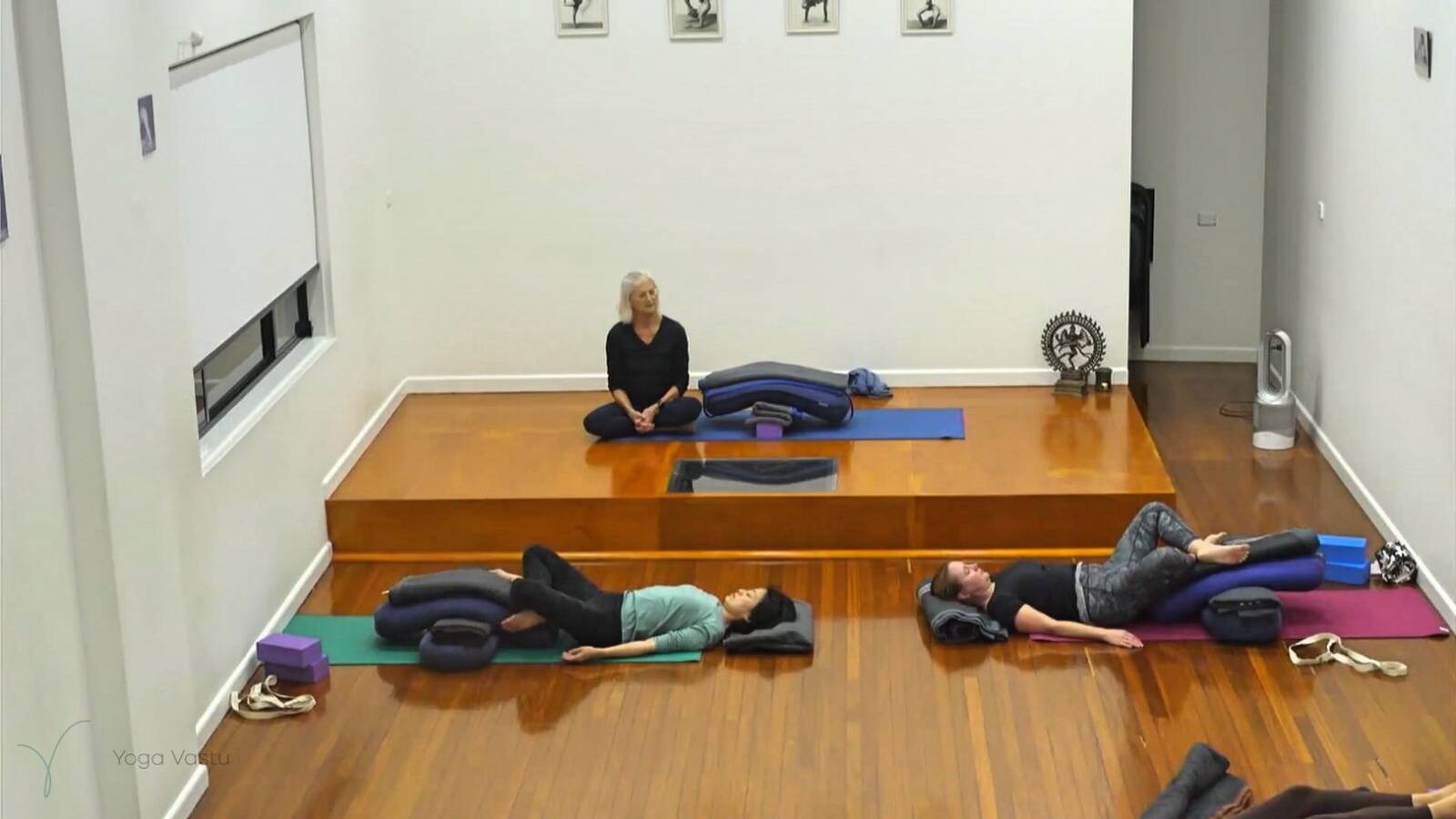In yoga, we’re not just doing but trying to observe what it is we’re doing. Slowing down the way we do during restorative days helps us become more observant and coming into this kind of practice intentionally once a week helps us establish a habit of being more aware of what is going on in our bodies during the more strenuous and dynamic sequences but also in our daily lives.
Restorative poses are also about releasing. This is especially important nowadays when so many of us spend so much time sitting at our desks or in front of computer screens. Such a lifestyle leads to stiffness and tension throughout the body. Allowing our bodies to settle into restorative postures, using props to help us elongate and stretch without straining — all of this can have great therapeutic effects and lead to an almost instant improvement in well-being.
In our restorative classes we often use the support of such props as bolsters, folded blankets, and even the wall to help us elongate the spine, stretch out the whole body, and open up the chest in a passive, minimal-effort way, thus allowing ourselves the space and time to focus on our breathing and enter a deep meditative state.
Sequences focussing on restorative poses, aside from being useful in your weekly practice as a way to keep you in touch with your body on a deeper level, can also be used as a form of stress release after a particularly difficult day at work or as a way to calm your mind and offer a new perspective when you’re feeling agitated or upset. They help us become more grounded and appreciative of the present moment.
In this class, we will start off with a brief asana practice, focussing mostly on warming up and stretching our main muscles and joints through poses such as Urdhva Baddanguliyasana in Tadasana, Paschima Namaskar, and Utthita Hasta Padangusthasana to the wall. Uttanasana will help us activate our hamstrings. In restorative classes, the asana practice at the beginning mainly serves the purpose of making us aware of our bodies, waking them up so to speak, before we settle into the restorative postures where it’s important for us to feel and observe the sensations that the more passive postures bring.
For the restorative part, we will take a few of the basic poses, such as Supported Setu Bandha Sarvangasana, Supta Swastikasana, Savasana over bolsters, and Viparita Karani. Throughout the practice, Pixie will be leading you through what to focus on and guiding you through the meditation once you get down into the more restorative half of the sequence.
Video stills from this sequence


